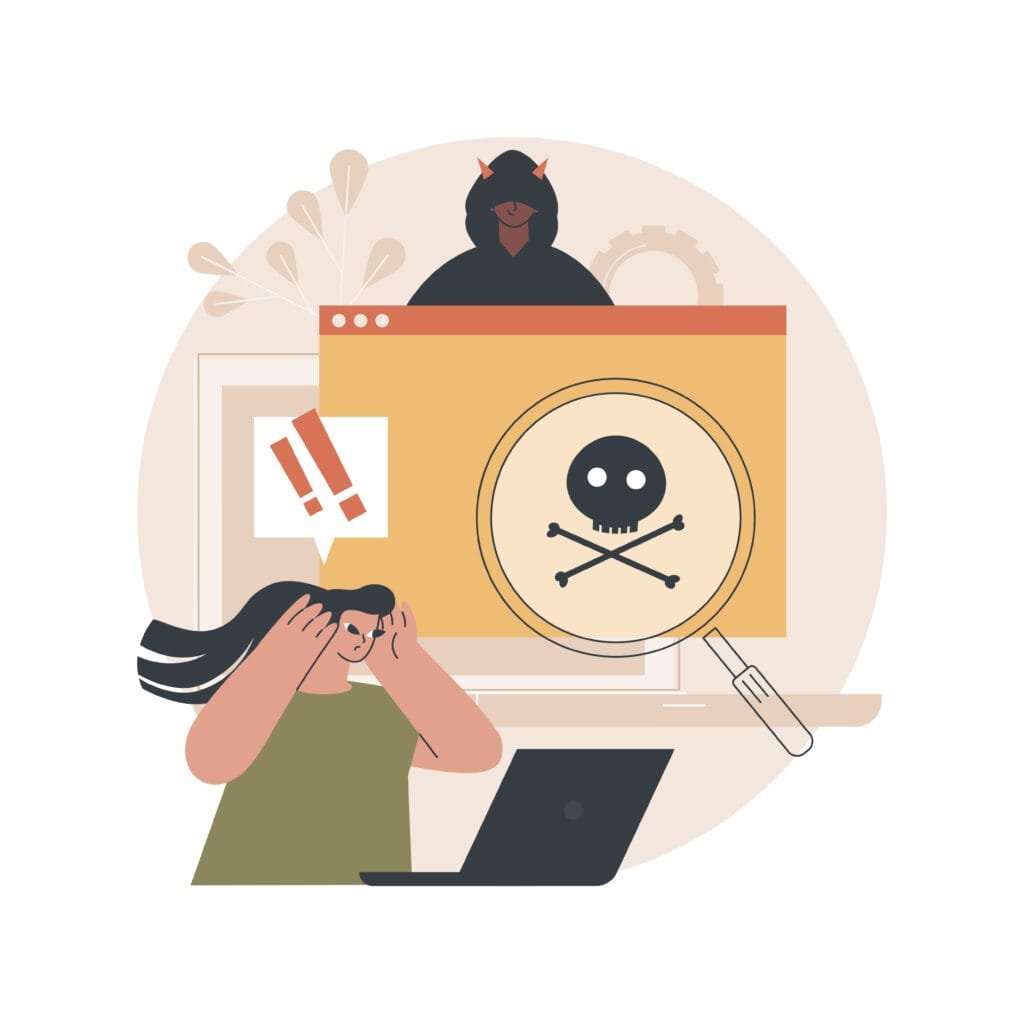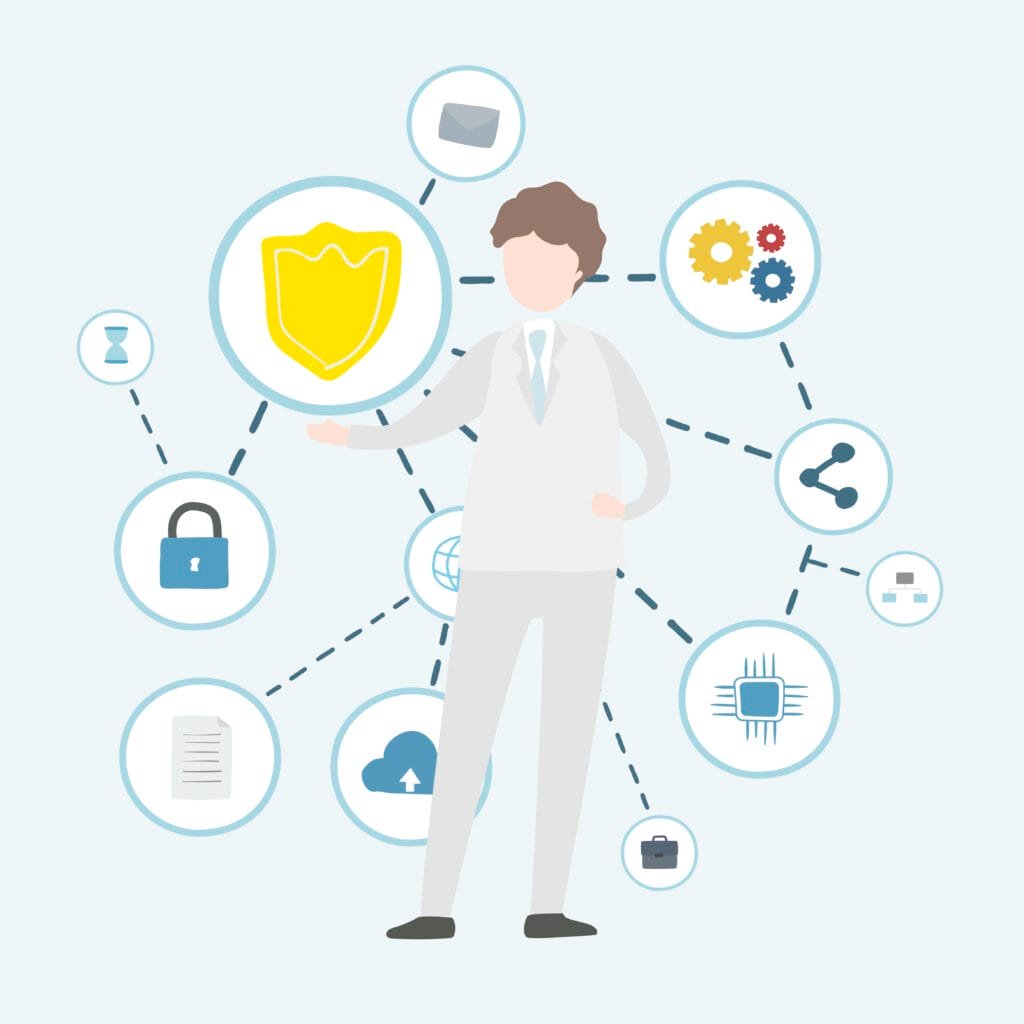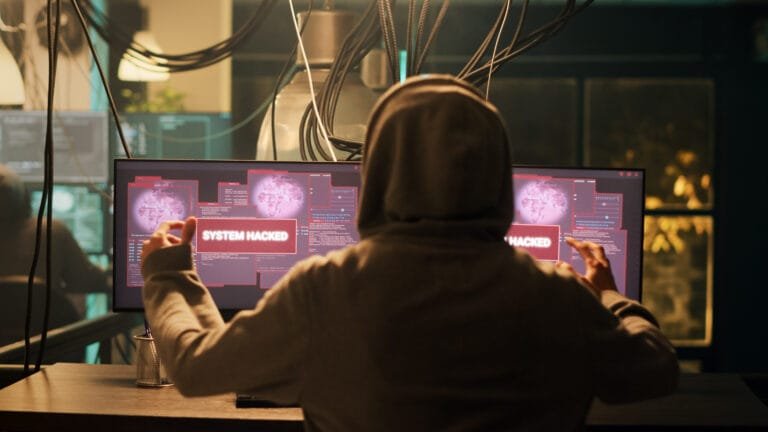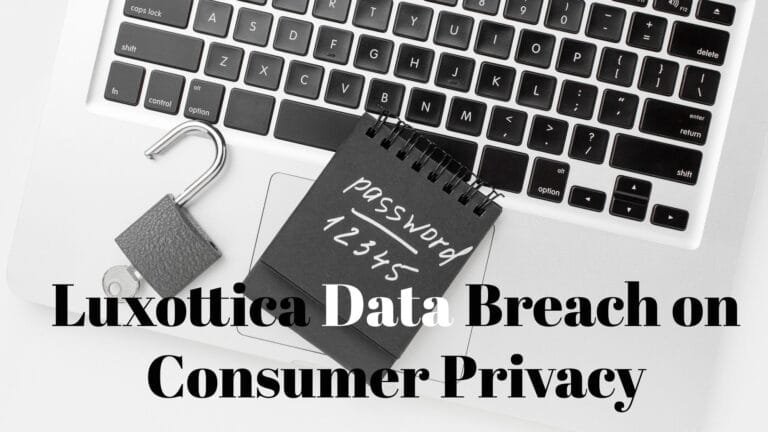Breaking Down the Convergent Data Breach: Are You at Risk?
Introduction
Both individuals and organizations tremble when they hear the words “data breach” in today’s connected digital landscape. Cybersecurity experts have taken notice of a recent occurrence known as the Convergent Data Breach. We will examine the complexities of this incident, evaluate any personal dangers, and look at practical solutions for protecting personal data in this post.
Understanding Convergent Data
The word “convergent data” has become more and more popular in the huge world of data. It is crucial that you first understand what convergent data means to fully appreciate the Convergent Data Breach.
What is Convergent Data?
Convergent data refers to the complete integration of many data sources into a single, consistent format. The collection includes a vast range of data, from transaction histories to personal information, resulting in a comprehensive dataset. These disparate data sources frequently come together within the systems of companies, organizations, or platforms that gather and handle data.
The Significance of Convergent Data
Convergent data is important because it can give a deep and comprehensive picture of a person or entity. It combines information from several sources, including social media, bank statements, and medical records, to provide a more comprehensive picture of an individual’s life or the workings of a company.
Attractive Target for Cybercriminals
Convergent data is an interesting target for cybercriminals due to its comprehensive nature. When sensitive data is collected into a single, coherent dataset, it becomes a goldmine for hackers and other bad actors looking to use weaknesses for financial fraud, business espionage, identity theft, and other illegal activities.
Convergent Data Breach Explained
When unauthorized parties obtain access to this combined dataset, the security and privacy of the individuals or entities involved are jeopardized, resulting in a Convergent Data Breach. In addition to revealing personal information, the hack raises questions about how private information may be used for illegal or harmful purposes.
The Scale of the Data Breach
One of the most important things to investigate as we work through the details of the Convergent Data Breach is the enormity of this data security disaster. To fully appreciate the impact the breach has on both persons and companies, it is imperative to understand the scope of the breach.
Magnitude and Scope
Convergent data breaches are not little security vulnerabilities; rather, they constitute a large-scale, critical compromise of private data. Thousands, if not more, of people, might discover that unapproved parties have access to their private and sensitive information. The impact of the breach might be increased if it spreads to other industries, such as healthcare, banking, and more.
Types of Data Compromised
The breach is much more dangerous because of the sheer number of convergent data. The exposed data covers a wide range of information, from financial records and medical histories to personal identification details like names, residences, and social security numbers. The breach is made even more concerning by the extensive exposure, which raises the possibility of diverse misuse.
Impact on Individuals
The consequences are severe for those impacted by the incident. Immediate concerns include identity theft, the possibility of fraudulent activity, and unauthorized access to financial accounts. The compromise raises concerns about the security protocols in place for protecting people’s most sensitive information in addition to compromising their privacy.
Ramifications for Businesses and Organizations
The Convergent Data Breach affects not just individuals but also companies and organizations that are in charge of protecting this data. Potential consequences include financial losses, legal problems, and serious damage to these businesses’ reputations. Rebuilding trust once it has been damaged is a complicated process.
Long-Term Consequences
Long-term effects on both persons and businesses are caused by the aftermath of a data breach. While organizations may suffer long-term harm to their brand image and customer relationships, individuals may encounter continuous difficulties in regaining their credit and personal security. Comprehending the extent of the breach is crucial to appreciate the pressing need to address its consequences.
Legal and Regulatory Scrutiny
Large-scale data breaches are frequently the subject of regulatory and legal attention. Authorities may look into what caused the breach, assess the security precautions used, and determine if the impacted organizations comply with applicable data protection laws and guidelines. The implications of the Convergent Data Breach become even more complicated as a result of this investigation.
Identifying Vulnerabilities

Understanding the core causes and vulnerabilities that enabled such a large exposure of sensitive data is essential to our understanding of the Convergent Data Breach. To put in place efficient security measures and stop further breaches, it is essential to understand these vulnerabilities.
Common Security Gaps
Data breaches frequently take advantage of widespread vulnerabilities in organizations’ and systems’ architecture. For cybersecurity to be strengthened, it is essential to find and close these gaps. Now let’s examine some common security flaws that hackers make use of:
Outdated Software and Systems
One of the main points of vulnerability is old software and systems. Security updates and patches are made available to fix known vulnerabilities; if you don’t apply them right away, you expose you vulnerable to cyberattacks. Updating software regularly is an easy yet effective way to strengthen defenses.
Weak Passwords and Authentication
Password weakness is still a major problem. Compromised credentials give hackers an easy way in, regardless of the source people using easily guessed passwords or businesses with loose password standards. Strong password regulations and multi-factor authentication are necessary to improve security.
Insufficient Data Encryption
To prevent illegal access, data must be encrypted both while it’s in transit and when it’s at rest. Sensitive data can be intercepted if encryption is not sufficiently strong. Adopting robust encryption technologies provides an extra degree of security by making intercepted data worthless for enemies.
Inadequate Employee Training and Awareness
In cybersecurity, people are typically the weakest link. Employees who lack the necessary training or information are more likely to make security mistakes like accidentally downloading malware or falling for phishing scams. Creating thorough training programs ensures that staff members are prepared to identify and counter such risks.
Employee Training and Awareness
To effectively address the human factor in security, staff awareness and training must receive special attention. This involves creating a cybersecurity culture throughout the company, which goes beyond just a one-time training session. Let’s analyze the essential components of efficient staff development:
Recognizing Phishing Attempts
Phishing is still a common method that criminals use. It is essential to teach staff members how to spot phishing attempts, especially shady emails or communications. Phishing attempt simulations are useful instruments for evaluating and enhancing staff members’ capacity to recognize and report phishing attempts.
Secure Remote Work Practices
As remote work becomes more common, it’s critical to follow safe procedures when working away from a traditional office setting. Comprehensive cybersecurity requires training staff members on the value of secure Wi-Fi connections, how to utilize virtual private networks (VPNs), and the dangers of using insecure devices.
Incident Response Protocols
Employee readiness for the possibility of a data leak is equally crucial. By establishing clear incident response procedures, employers can make sure that staff members are aware of what to do in the event of a security issue or suspicions. This covers methods for reporting issues as well as quick fixes to minimize any harm.
Perplexity in Cybersecurity
The word “perplexity” emphasizes the deep and complicated nature of the issues faced by both individuals and organizations in the constantly changing field of cybersecurity. Understanding the workings of cyber dangers requires a careful examination of the confusing components that make up this domain.
The Dynamics of Cyber Threats
Cyber threats are complex and dynamic, always changing to surpass established security protocols. To effectively navigate this complex environment, people and organizations need to be aware of the several kinds of dangers that could be present:
Malware and Ransomware
Viruses, worms, and trojans are just a few examples of the many types of malicious software, or malware, that enter networks and steal data. Malware that encrypts data and demands a ransom to unlock it is known as ransomware. It is necessary to understand these threats to put in place efficient defenses.
Phishing Attacks
Phishing attacks involve forcing someone into revealing private information, frequently using false emails or messages. The intricacy of phishing techniques keeps growing, necessitating ongoing awareness and education to spot and foil such attempts.
Advanced Persistent Threats (APTs)
APTs are focused, protracted cyberattacks that are planned and carried out by formally structured, well-funded groups. These hazards are particularly difficult to manage since they frequently remain undetected for long periods. A solid understanding of APTs is essential for proactive defense.
Zero-Day Exploits
Zero-day exploits are software vulnerabilities that the vendor is unaware of, giving hackers a brief window of time to conduct assaults before patches are made available. Mechanisms for quick detection and reaction are necessary to neutralize these sneaky dangers.
Evolving Tactics of Hackers
Hackers’ strategies are always changing because they have to adjust to new developments in technology and security protocols. Analyzing these changing strategies reveals the sophistication of modern cyber threats:
Social Engineering
Social engineering is the practice of forcing someone into disclosing private information or taking activities that compromise security. Hackers use a variety of social engineering techniques to get past protections, such as posing as someone else or taking advantage of psychological weaknesses.
Fileless Malware
Fileless malware is difficult to identify because it functions in the computer’s memory without leaving a trace on the hard disk. By using reputable system processes, this type of malware avoids detection by conventional antivirus software. Fileless malware must be identified and eliminated using advanced threat detection techniques.
Supply Chain Attacks
Supply chain assaults make use of weaknesses in external suppliers or partners, as opposed to directly targeting a particular firm. This strategy makes it possible for hackers to indirectly infiltrate a target, highlighting the significance of thorough cybersecurity precautions along the whole supply chain.
Navigating Perplexity for Robust Cybersecurity
To navigate the perplexity in cybersecurity, individuals and organizations must adopt a proactive and adaptive approach:
Continuous Education and Training
It is essential to regularly inform users about new dangers and to provide them with ongoing training on cybersecurity best practices. This gives people the ability to identify changing threats and take appropriate action in response.
Advanced Threat Detection Tools
Investing in artificial intelligence (AI) and machine learning (ML) technologies, together with other advanced threat detection techniques, improves the capacity to recognize and eliminate complex threats. Large volumes of data can be analyzed by these tools to find anomalies that could be signs of future cyberattacks.
Collaboration and Information Sharing
The field of cybersecurity involves a team effort to defend itself. To get ahead of new threats, cybersecurity experts and organizations need to work together and exchange threat intelligence. Sharing information makes it easier to respond proactively to possible cyberattacks.
Regular Security Audits and Assessments
Finding weaknesses in systems and networks is facilitated by routinely performing security audits and assessments. By taking preventative actions, like penetration testing, companies may fix such vulnerabilities before hackers can make use of them.
Burstiness in Breaches
Within the field of cybersecurity, “burstiness” refers to the sudden and frequent unpredictability of an increase in cyberattacks. Individuals and organizations seeking to strengthen their defenses against an increasingly dangerous environment must comprehend the dynamics of this burstiness.
Rapid Increase in Cyber Attacks
The concerning increase in assault frequency and severity is referred to as the “burstiness” of cyber breaches. This sharp increase in intensity is caused by multiple factors:
Exploitation of Vulnerabilities
Cybercriminals have experience in finding and taking advantage of vulnerabilities in systems, software, and human behavior. A vulnerability is immediately ready for exploitation the moment it is found. Attack strategies are quickly deployed to take advantage of the window of opportunity before countermeasures can be put in place.
Weaponization of Advanced Tactics
The weaponization of sophisticated strategies results in a constant evolution of cyber threats’ toolkits. Hackers use cutting-edge tools and strategies, such as complex social engineering schemes and sophisticated malware, to enhance the impact of their attacks. The rapid advancement of these strategies adds to the frequency of cyberattacks.
Automation and Botnets
With little to no human involvement, criminals may plan large-scale operations thanks to automation and botnets. Automated tools can quickly locate weak points, carry out attacks, and spread malware, which can result in a spike in malicious activity that overwhelms defenses.
Impact on Individuals and Businesses
The burstiness in cyber breaches has profound implications for both individuals and businesses:
Individuals
The rapid increase in cyberattacks means that people are more vulnerable to many kinds of dangers. The increase in cyberattacks has made people more aware of the necessity for them to maintain vigilance and implement strong cybersecurity procedures to protect their data, which includes financial crime and identity theft.
Businesses
Cyberattacks are becoming more frequent for businesses, and they can cause operational disruptions, financial losses, and reputational harm. Organizations face more pressure than ever to adopt proactive cybersecurity measures, carry out frequent risk assessments, and improve their defenses against unexpected attacks because of how frequently breaches occur.
Strategies to Mitigate Burstiness
Effectively mitigating burstiness in cyber breaches requires a comprehensive and adaptive cybersecurity strategy:
Threat Intelligence and Monitoring
Monitoring threat intelligence sources continuously offers important insights into new cyber threats. Organizations should anticipate potential bursts and proactively update their security by being educated about the latest tactics, techniques, and procedures used by cybercriminals.
Rapid Incident Response
Immediate and coordinated incident response is critical to minimizing the damage caused by periodic cyberattacks. Establishing clear incident response strategies will help organizations identify, contain, and eliminate dangers before they become more serious.
Regular Security Drills and Simulations
Organizations can better prepare themselves for the unexpected increase in cyberattacks by regularly conducting security drills and simulations. Teams may improve response times, spot vulnerabilities, and hone cybersecurity defenses by modeling actual attack scenarios.
The Human Element in Security

The human factor is a crucial component in the complex fabric of cybersecurity, impacting both the probability of breaches and the efficacy of defenses. For cybersecurity to remain human-centric, it is imperative to understand user behavior and the strategies used by hackers in social engineering assaults.
Importance of User Behavior
Users have a big influence on the security posture, whether they are individuals or workers in an organization. Understanding user behavior is essential to creating tactics that encourage people to actively contribute to cybersecurity rather than focusing on potential weaknesses:
Security Awareness
Effective cybersecurity is based on encouraging consumers to be aware of security issues. A collective defense against cyber threats is bolstered by educating people about common hazards, the need for data protection, and their part in maintaining a safe environment.
Recognizing Anomalies
Users are better able to spot possible security risks when they can spot anomalies in their digital interactions. Understanding what regular behavior helps people spot and report suspicious activity on time, from odd email conversations to unexpected system prompts.
Social Engineering Tactics
Social engineering is a clever technique used by cybercriminals to take advantage of people. To prevent possible assaults, people and organizations must be aware of these strategies:
Phishing Attacks
Phishing is still a common social engineering technique used by cybercriminals to mislead people into disclosing personal information. Phishing involves sending false emails, texts, or websites. It’s important to recognize the warning signs of phishing attempts, which include misspelled URLs and unusual requests for personal information.
Impersonation and Pretexting
Impersonation is the act of appearing as someone that an attacker is not, frequently taking advantage of confidence to obtain private data. Pretexting is the art of fabricating a situation to persuade someone to disclose information. Both strategies focus on playing on people’s emotions and sense of trust.
Baiting and Quizzes
Offering something appealing to trick people into falling into a trap such as clicking on a malicious link is known as baiting. A person’s personal information can be obtained through surveys, online games, and quizzes. It’s important to use caution and skepticism when coming upon unexpected internet stuff.
Protecting Personal Data
In an environment where sensitive personal information is highly valued and a primary focus for cybercriminals, putting strong security measures in place is essential. The actions that people can take to prevent their personal information from getting into the wrong hands are described in this section.
Encryption and Secure Communication
Using secure communication channels and encryption is one of the fundamental stages in protecting personal data. Information is encoded using encryption so that only parties with permission can access it. Here’s how people can use encryption to increase their security:
Use End-to-End Encryption
Make use of message and chat services that provide end-to-end encryption. This creates a safe link for private information by ensuring that only the intended recipient can decrypt and access the messages.
Secure Wi-Fi Networks
Make sure the Wi-Fi network is secure before sending any sensitive information. For Wi-Fi access, create strong, unique passwords and, if supported, activate WPA3 encryption. To reduce the chance of interception, stay away from using public Wi-Fi networks to access critical information.
Two-Factor Authentication
Using two-factor authentication (2FA) as an additional layer of protection is a good way to keep unwanted users from accessing personal accounts. Here’s how people can use 2FA and reap its benefits:
Enable 2FA on Accounts
Whenever possible, enable two-factor authentication for your online accounts. This usually involves obtaining a code via a mobile app or a backup device, making sure that even if passwords are hacked, access still requires a second step.
Use Authenticator Apps
Authenticator applications are preferable to SMS-based 2FA techniques. Using time-sensitive codes generated by authenticator applications is a more secure method than using SMS messages, which are susceptible to interception.
Staying Informed and Vigilant
For everyone looking to protect their online identity, being aware and alert is crucial in the quickly changing field of cybersecurity. This section looks at proactive steps and tactics people may take to safeguard their data and keep ahead of new cyber threats.
Regular Software Updates
Updating device software regularly is a basic step toward improving cybersecurity defenses. Updating software is crucial since patches for known vulnerabilities are frequently included in updates. Here’s how people can make sure they are current:
Enable Automatic Updates
Whenever possible, turn on automatic updates for apps, operating systems, and antivirus programs. This minimizes the window of risk by ensuring that the most recent security fixes are applied as soon as possible.
Check for Updates Manually
Individuals should routinely check for updates manually for any devices or applications that do not have automated updating capability. Establish a schedule for reviewing and implementing upgrades to reduce any security threats.
Monitoring Financial Transactions
A proactive approach to spotting any unusual activity that can point to fraud or illegal access is to keep an eye on financial transactions. Here’s how people can successfully keep an eye on their bank accounts:
Recovery Measures After a Data Breach

Although dealing with a data breach might be frightening, it’s essential to take immediate action to minimize the damage and stop it from getting worse. This section explores what people may do to protect themselves and take back control of their digital security following a data breach.
Immediate Actions
When a data breach is suspected or confirmed, taking immediate action is vital to minimize potential damage and secure compromised information:
Change Passwords
For impacted accounts, change passwords right away. To stop additional unwanted access, pick strong, one-of-a-kind passwords and refrain from using the same one for all of your accounts.
Enable Two-Factor Authentication
On the affected accounts, enable two-factor authentication (2FA) if it hasn’t already been done so. This extra security measure helps prevent unwanted access even if passwords are stolen.
Contact Financial Institutions
Inform the appropriate financial institutions of the breach if there is any financial information involved. Together with the institutions, secure and retrieve any compromised assets by keeping an eye out for any unlawful activity on the accounts.
Notification and Reporting
Reporting the data breach and notifying relevant authorities is a crucial step in addressing the incident and preventing further harm:
Report to Authorities
Report the event to law enforcement if sensitive personal information, such as financial or social security numbers, is compromised. Give all the information required to support the investigations.
File a Complaint with Regulatory Bodies
Report the breach to the appropriate regulatory authorities if it involves personal information protected by data protection laws. This is particularly crucial in areas where data protection regulations are strict.
Conclusion
In conclusion, a comprehensive strategy that incorporates knowledge, preventative measures, and ongoing adaptability to the changing landscape of cybersecurity threats is necessary to navigate the complexities of the Convergent Data Breach. Both individuals and businesses are essential in strengthening their digital defenses, from assessing the scope of the breach and identifying weaknesses to appreciating the complexity and volatility of cyber attacks.
FAQs
1. What is a Convergent Data Breach?
A Convergent Data Breach occurs when unauthorized parties gain access to a unified dataset that consolidates information from various sources, exposing sensitive data such as personal, financial, or medical records. This breach poses significant risks, including identity theft and financial fraud.
2. How can individuals protect their data from a potential breach?
Individuals can protect their data by using strong, unique passwords, enabling two-factor authentication, regularly updating software, and monitoring financial transactions. Additionally, staying informed about common scams and employing encryption for secure communication adds an extra layer of defense.
3. What immediate actions should be taken if a data breach is suspected?
If a data breach is suspected, individuals should change passwords, enable two-factor authentication, and contact relevant financial institutions to secure compromised assets. Reporting the breach to authorities and filing complaints with regulatory bodies is essential for initiating investigations.
4. How can businesses enhance cybersecurity against convergent data breaches?
Businesses can enhance cybersecurity by conducting regular security audits, implementing advanced threat detection tools, providing comprehensive employee training, and fostering a cybersecurity culture. Collaboration and information sharing within the cybersecurity community are also critical for staying ahead of emerging threats.
5. What role does the human element play in cybersecurity?
The human element is pivotal in cybersecurity, influencing the effectiveness of defenses and susceptibility to social engineering tactics. Security awareness, recognizing anomalies, and ongoing education empower individuals to contribute actively to cybersecurity defenses, mitigating potential risks.







